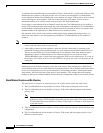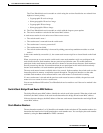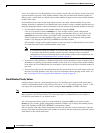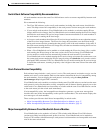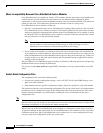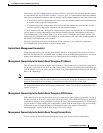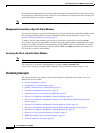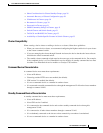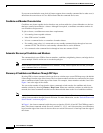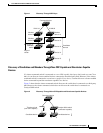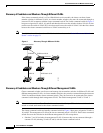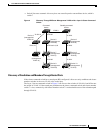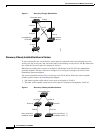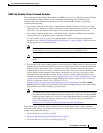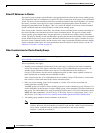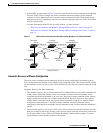
Cisco EtherSwitch Service Modules Feature Guide
Information About the Cisco EtherSwitch Service Modules
22
Cisco IOS Release 12.2(25)SEC
If you want to maintain the same level of feature support when a standby command device takes over, it
should run the same release of Cisco IOS software that the command device runs.
Candidate and Member Characteristics
Candidates are cluster-capable devices that have not yet been added to a cluster. Members are devices
that have actually been added to a cluster. Although not required, a candidate or member can have its
own IP address and password.
To join a cluster, a candidate must meet these requirements:
• It is running cluster-capable software.
• It has CDP version 2 enabled.
• It is not a command device or a member of another cluster.
• If a standby group exists, it is connected to every standby command device through at least one
common VLAN. The VLAN to each standby command device can be different.
• It is connected to the command device through at least one common VLAN.
Automatic Discovery of Candidates and Members
The command device uses CDP to discover members, candidates, neighboring clusters, and edge devices
across multiple VLANs and in star or cascaded topologies.
Note Do not disable CDP on the command device, members, or any cluster-capable devices that you might
want a command device to discover.
Discovery of Candidates and Members Through CDP Hops
By using CDP, a cluster command switch can discover switches up to seven CDP hops away (the default
is three hops) from the edge of the cluster. The last cluster member switches are connected to the cluster
and to candidate switches at the edge of the cluster. For example, cluster member switches 9 and 10 in
Figure 1 are at the edge of the cluster.
You can set the number of hops that the cluster command switch searches for candidate and cluster
member switches by choosing Cluster > Hop Count. When new candidate switches are added to the
network, the cluster command switch discovers them and adds them to the list of candidate switches.
Note A switch stack in a cluster equates to a single cluster member switch. There is a restriction specific to
adding cluster members through Network Assistant. For more information, see the “Switch Clusters and
Switch Stacks” section on page 31.
In Figure 1, the cluster command switch has ports assigned to VLANs 16 and 62. The CDP hop count is
three. The cluster command switch discovers switches 11, 12, 13, and 14 because they are within three
hops from the edge of the cluster. It does not discover switch 15 because it is four hops from the edge of
the cluster.



